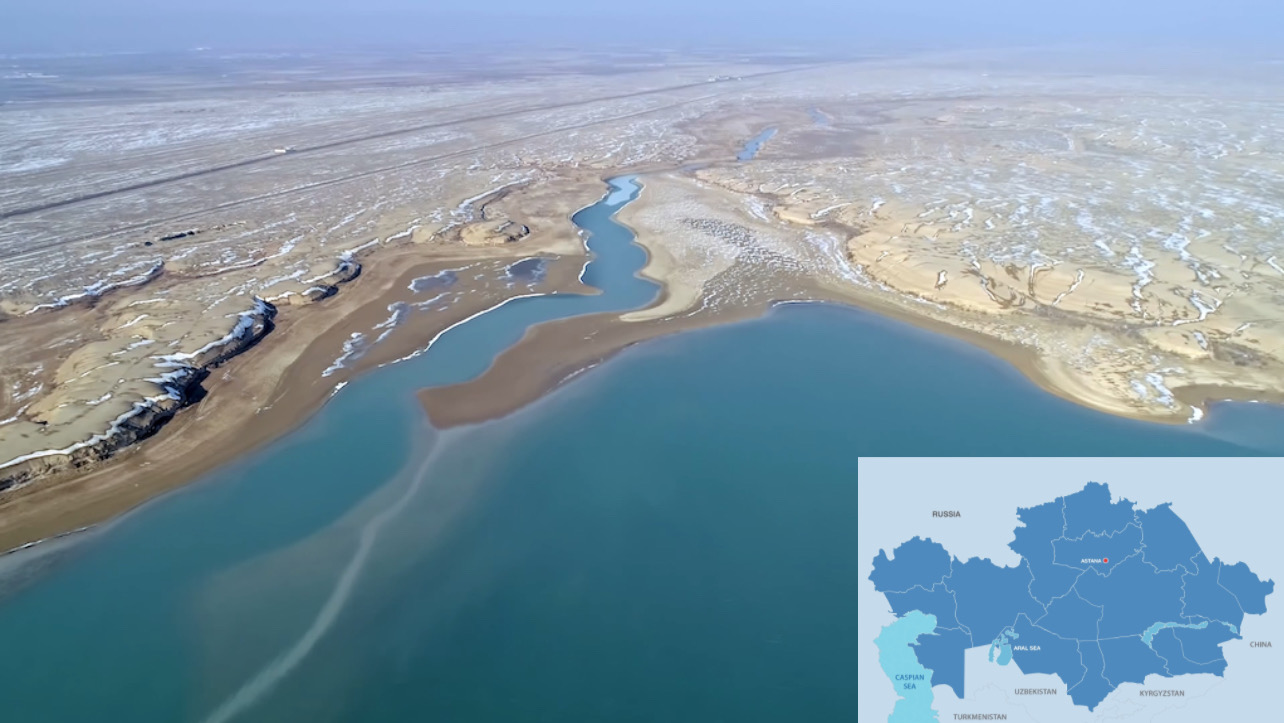ASTANA – Last month, Italian capital Rome hosted the seventh EU–Central Asia High-Level Conference, which Kazakhstan chaired. One of the areas of cooperation between the EU and Central Asia is addressing the Aral Sea crisis.

The Aral Sea, once the largest inland lake in the world, has shrunk tremendously over the past decades. Photo credit: adb.org.
Bolat Bekniyaz, director of the Executive Board of the International Fund for Saving the Aral Sea, discussed the lake’s ecosystem in a recent interview with Kazinform.
Please tell us about the High-Level Conference between the EU and Central Asia on environmental protection, water resources, and climate. What are the key issues that were discussed?
– This conference was conceived in 2009 in Rome, in the building of the Italian Ministry of Foreign Affairs. The participants of those meetings outlined the priorities of cooperation between Central Asia and the European Union in the sphere of environmental protection.
This process is still ongoing. One of its directions is the introduction of the Nexus approach, which involves interaction in the field of water resources, energy, food, and the environment. This mechanism enables intersectoral cooperation and interdepartmental coordination. For example, each sector of the economy in our country is interested in implementing its own goals and objectives. The Nexus approach allows us to combine these goals, efforts, and opportunities to reach a more significant result. Therefore, this is a crucial process for Kazakhstan.
I represent the International Fund for Saving the Aral Sea in Kazakhstan, and we have launched a pilot project on Nexus Dialogue. As a result, we planted saxaul trees directly in the Aral Sea region, utilizing a new method of a closed root system, which significantly increases the survivability of saxaul on the Aral Sea bed.
Could you explain this in more detail?
– Under traditional methods, saxaul is planted mechanically in large areas, but the survivability is low – about 20 percent or less. However, its survivability increases to approximately 50 percent when planted in a closed root system. Our Korean colleagues adopted this approach when creating Mongolia’s Green Belt.
The main challenge in the Aral Sea region right now is the removal of salt and dust from the bottom of the lake. Therefore, it is necessary to revegetate the dried seabed, as recommended by many domestic and foreign scientists.
Revegetation, which involves planting native plant species, reduces wind speed and dust formation. For instance, one adult saxaul plant can hold up to 4 tons of sand.
In addition to this project, we proposed to our foreign partners the USAID project, as part of which we intend to create an oasis at the bottom of the Aral Sea and drill a deep well to provide sustainable irrigation for saxaul. Although it’s a desert plant, it requires water after a period of time.
In the first years of life, saxaul uses atmospheric precipitation and soil moisture, but we have to provide groundwater to keep it alive in subsequent years. Unfortunately, groundwater is either highly saline at the bottom of the Aral Sea or has dropped too deep.
For this reason, water extraction from deep artesian basins allows us to replenish this groundwater and create favorable soil and hydro reclamation conditions for the growth of saxaul and various other types of vegetation. It is an innovative approach, which will be considered by our forestry institutions engaged in planting saxaul.
We must also try to prevent sulfate salt, which is poisonous, from entering the human body, which causes many diseases when ingested. Last October, we held an international conference in Kyzylorda on the Environment and Health of the Population of the Aral Sea Region with the Senate of the Parliament of Kazakhstan and World Health Organization international experts. The meeting concluded that the situation is bleak – the health of the population of the Aral Sea region is worse when compared to people living in other regions of Kazakhstan. Therefore, we have to make every effort to prevent this process.
The German Society for International Cooperation (GIZ) also assists Kazakhstan within the Ecologically Oriented Development in the Aral Sea Region project. A complete mapping of the Kazakh part of the dried Aral Sea bed was carried out last year as part of the project. As a result, we now have information on the soil, hydrogeological, vegetation, and weather conditions. In addition, climate forecast maps and environmental risk maps have been created. They allow us to determine the areas for saxaul planting and establish their order of priority.
A feasibility study of a large World Bank project is also being developed alongside these projects. One of its components is afforestation, to which we are incorporating our experience in creating oases on the bottom of the Aral Sea.
Ultimately, we want to create several oases. They are described as oasis growth areas from which vegetation and seeds will spread in all directions.
In your opinion, when will the Aral Sea crisis be fully resolved?
– We have been discussing this crisis for more than 60 years and have been trying to solve it for 30 years. Kazakhstan, as one of Central Asia’s developed countries, has to find a sustainable solution to this problem. We have all the necessary capabilities, scientific and engineering ideas, and technical methods. The World Bank is ready to provide loans, and we should try to solve this crisis over the next 10-12 years.
As I mentioned, several donors are working in the Aral Sea region, and our task as a Fund is to coordinate their efforts. Together with the international community, we can solve the Aral Sea crisis. All the conditions are in place for that.
The article was initially published in Kazinform.

